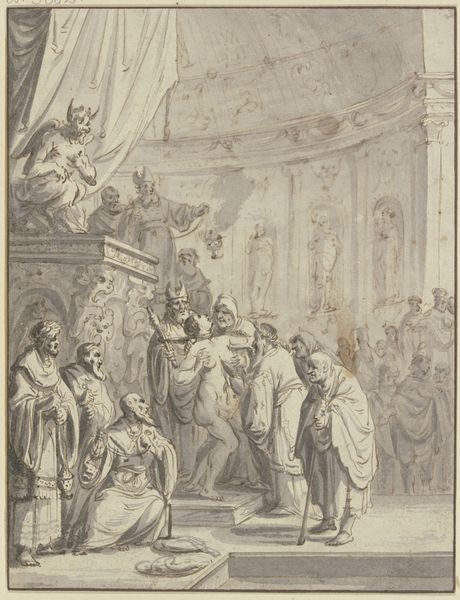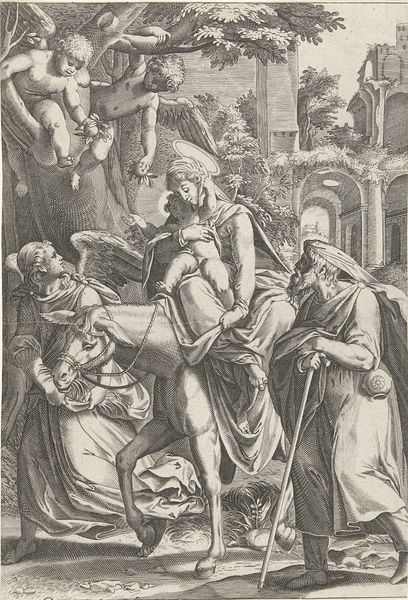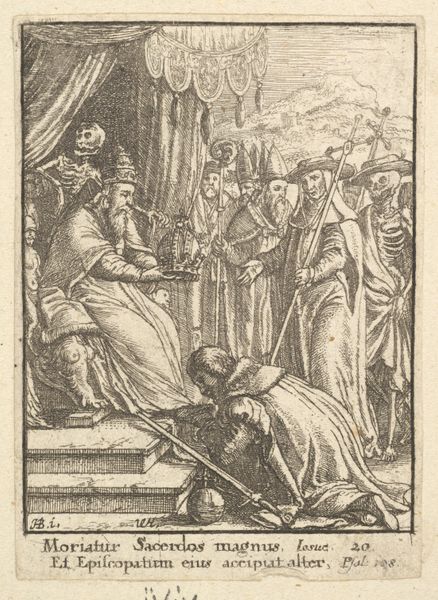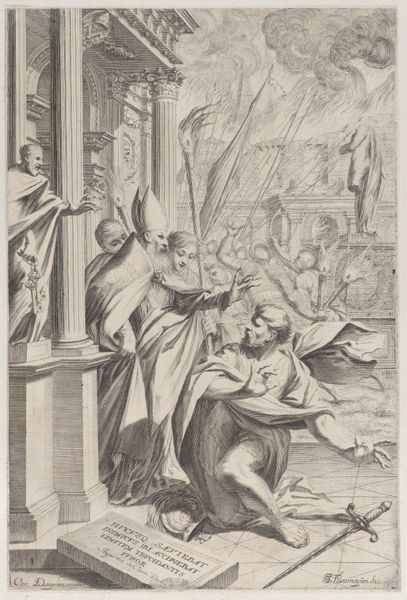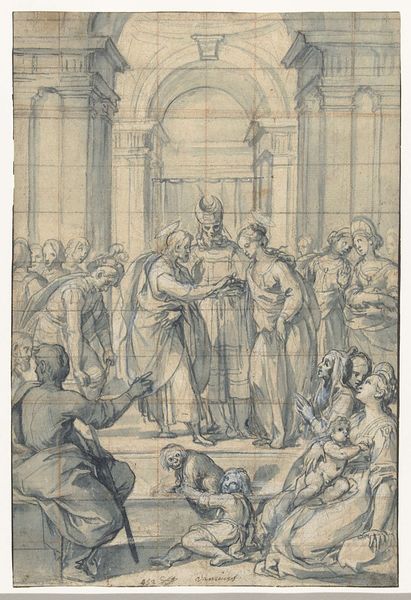
Louis III et Carloman donnent aux eveques du Royaume l'assurance de leur Fidelite en 882 1786 - 1796
0:00
0:00
drawing, print, paper, charcoal
#
drawing
#
narrative-art
# print
#
charcoal drawing
#
paper
#
classicism
#
15_18th-century
#
charcoal
#
history-painting
#
academic-art
Dimensions: sheet: 4 3/16 x 3 in. (10.7 x 7.6 cm)
Copyright: Public Domain
Editor: This is "Louis III et Carloman donnent aux eveques du Royaume l'assurance de leur Fidelite en 882" created between 1786 and 1796. It’s a charcoal drawing on paper. The figures are all so still and serious, and I’m curious about the story behind the oath they are taking. How do you interpret this work in the context of its time? Curator: The oath is central, isn’t it? This work presents itself as a historical record, an attempt to legitimize power through an appeal to tradition. Consider the political landscape of late 18th-century France. We see this piece emerging just before the Revolution. How do you think representations of historical oaths and royal fidelity might have been received and interpreted by audiences grappling with questions of power, legitimacy, and social contract? Editor: So it's less about literal history, and more about using history to make a political statement? Curator: Exactly. It invites us to question the construction of historical narratives themselves. Note the academic style—controlled lines, balanced composition, idealized figures. Who benefits from presenting history in such a manner? Are there voices and perspectives being excluded or marginalized in this representation? Editor: It makes you wonder what a counter-narrative might look like, especially considering it was made so close to the Revolution. I never thought of art from this period as having that kind of social commentary. Curator: Precisely! And understanding that undercurrent lets us unpack the artwork's potential to reveal these fault lines and hidden agendas in ways that resonate even now. By looking closely at the imagery of power, its claims to history and legitimacy, it reveals its entanglement within complex political struggles. Editor: I see what you mean, especially by comparing how political power works in that moment with how it works today. Curator: Indeed.
Comments
No comments
Be the first to comment and join the conversation on the ultimate creative platform.

